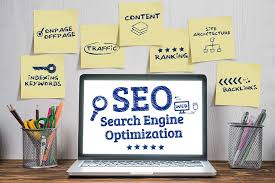Finding the right keyword that fits well to your content by using marketing analytical tools doesn’t take much of an effort. This article serves as a simple guide to explaining keyword optimization.

The ever-growing world of SEO does not seem to be a cakewalk among professionals. This is undoubtedly for the changing nature of search engine algorithms. Marketers to SMEs and from MNEs to Big Four, all desire the top ranking in their relative domains. To make your web page or landing page appear at the top in google search results, using an effective keyword is equivocal. This is one crucial element of your SEO strategy that does not change in the race of algorithms.
Finding the right keyword that fits well to your content by using marketing analytical tools doesn’t take much of an effort. This article serves as a simple guide to explaining keyword optimization.
Why Are Keyword Research Crucial to SEO?
As people surf the internet, they type relevant words into the browsers that let the top results appear based on what they type. It’s simple, a search engine shows web pages with common words or phrases related to the user’s search. As a general rule, the relevant keywords are a group of documented typed results efficiently traced by AI. If there are relevant keywords in your piece of content, they are automatically aligned to the user’s typed search results. Thus, making your article more likely to rank in the top search engine results. Now you know researching the right keyword is crucial for SEO.

What is SEO optimization?
The goal of SEO optimization is to ensure the keywords used in your content fit organically and align with the searcher’s intent.
SEO optimization might be a never-ending knowledge for some marketers as there are a wide array of other factors to keyword research. As the searcher’s search terms evolve and upgrade constantly, the websites managing the most traffic today may not continue appearing at the top always. The combination of keywords that provides the maximum search status needs to be optimized according to SEO algorithms changes.
1# Audit your existing On-Page SEO
First, you perform an audit of your existing On-Page SEO system. Look and re-shape your Title Tags, Meta Descriptions, URL Structures, Backlinks, Header Tags, etc, make them enticing and relatable enough with the rest of the page. Evidently, it will make your article increase conversion rates and Click through rates (CTR).
2# Map your Keyword Research
Keyword mapping is one of the best strategies you can incur to leverage your SEO skills. The local running keyword planners are complex work in progress with constant shifts.
Hence, once you have a basic list of keywords relevant to your website’s content, you can interact with more targeted phrases among your competitors. Analyze keywords specific to your industry to obtain more traffic using only the vital seed keywords.

The idea behind mapping keywords generates identical sets of a balanced SEO manual on your page. Writers should avoid loading excess keywords that are unnecessary to the front page. Shortlisting a list of target keywords related to seed keywords determines your web page to be distinct and stand out top in search results.
3#Always get educated about your target audience
Learning about your consumer requirements. will help you optimize each piece of content with an SEO strategy. This will instantly boost the quality and quantity of the traffic received by a website.
It’s vital to incur proper keywords and eliminate wrongly placed keywords as it would lead the wrong audience to your site. Surely this is a bad strategy and incorporates search terms that your potential audience doesn’t want.













